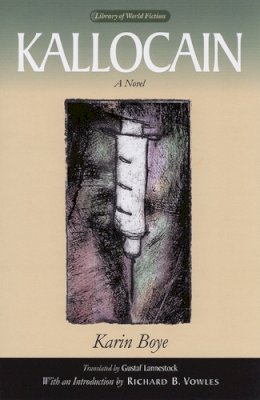
Stock image for illustration purposes only - book cover, edition or condition may vary.
Description for Kallocain
Paperback. First published in Swedish in 1940, this novel envisioned a future of drab terror. Seen through the eyes of idealistic scientist Leo Kall, it depicts a totalitarian world state. Its central idea grew from the rumours of truth drugs that ensured the subservience of every citizen to the state. Translator(s): Lannestock, Gustaf. Series: Library of World Fiction S. Num Pages: 220 pages. BIC Classification: FA. Category: (G) General (US: Trade). Dimension: 217 x 140 x 13. Weight in Grams: 272.
This classic Swedish novel envisioned a future of drab terror. Seen through the eyes of idealistic scientist Leo Kall, Kallocain's depiction of a totalitarian world state is a montage of what novelist Karin Boye had seen or sensed in 1930s Russia and Germany. Its central idea grew from the rumors of truth drugs that ensured the subservience of every citizen to the state.
This classic Swedish novel envisioned a future of drab terror. Seen through the eyes of idealistic scientist Leo Kall, Kallocain's depiction of a totalitarian world state is a montage of what novelist Karin Boye had seen or sensed in 1930s Russia and Germany. Its central idea grew from the rumors of truth drugs that ensured the subservience of every citizen to the state.
Product Details
Format
Paperback
Publication date
2002
Publisher
University of Wisconsin Press
Condition
New
Series
Library of World Fiction S.
Number of Pages
220
Place of Publication
Wisconsin, United States
ISBN
9780299038946
SKU
V9780299038946
Shipping Time
Usually ships in 7 to 11 working days
Ref
99-1
About Karin Boye
Karin Boye (1900-1941) was a Swedish poet and novelist whose suicide in 1941 amid the shambles of a war-racked Europe reflects the fate of a whole generation of writers. Her first novel, Astarte, appeared in 1931.
Reviews for Kallocain
"A fascinating novel of the 1984 and Brave New World genre." - Library Journal "Despite the robot-like characteristics of the fellow-soldiers in Boye's nightmare city, she expresses her poetic genius in the use of symbols and imagery." - Signe A. Rooth, Scandinavian Studies"
